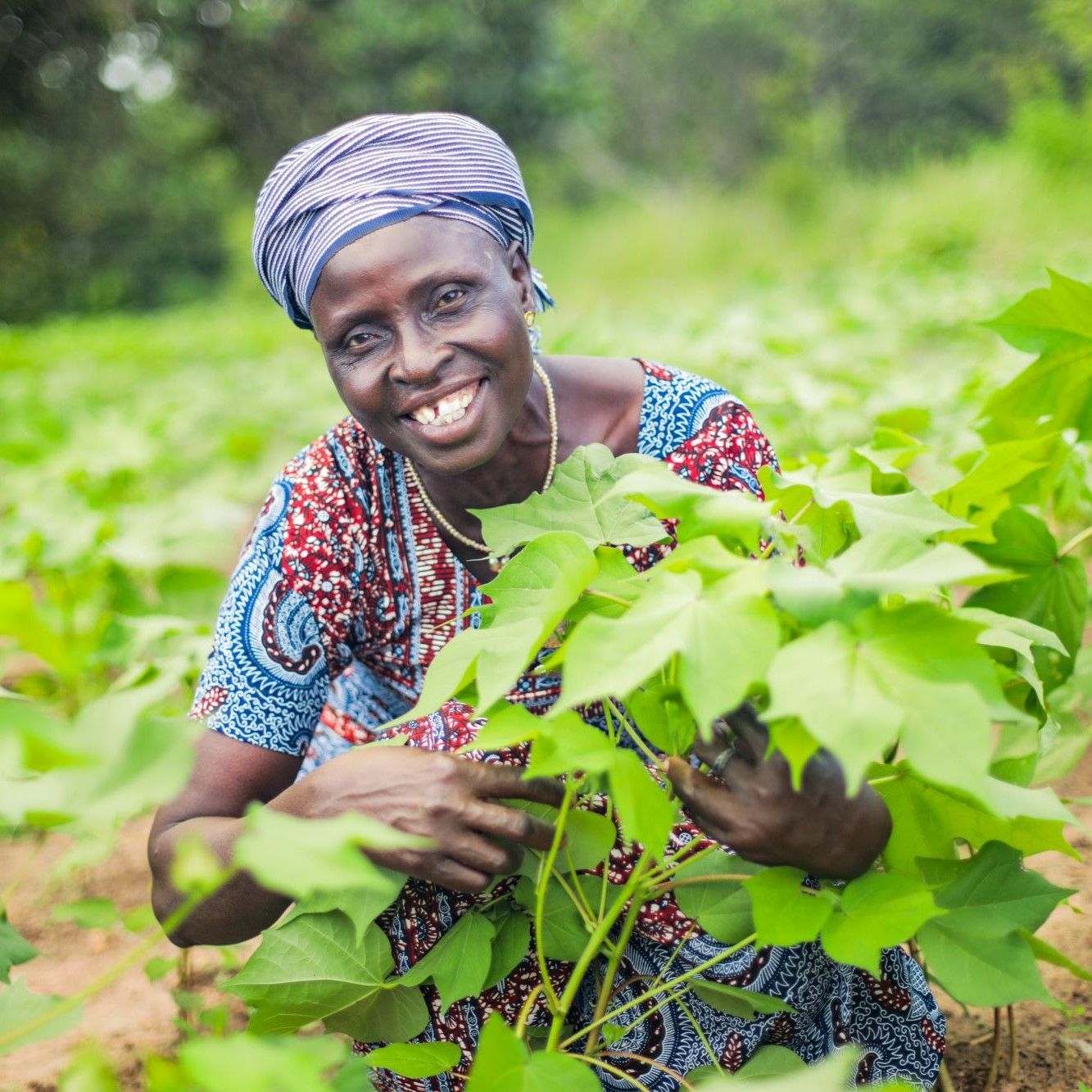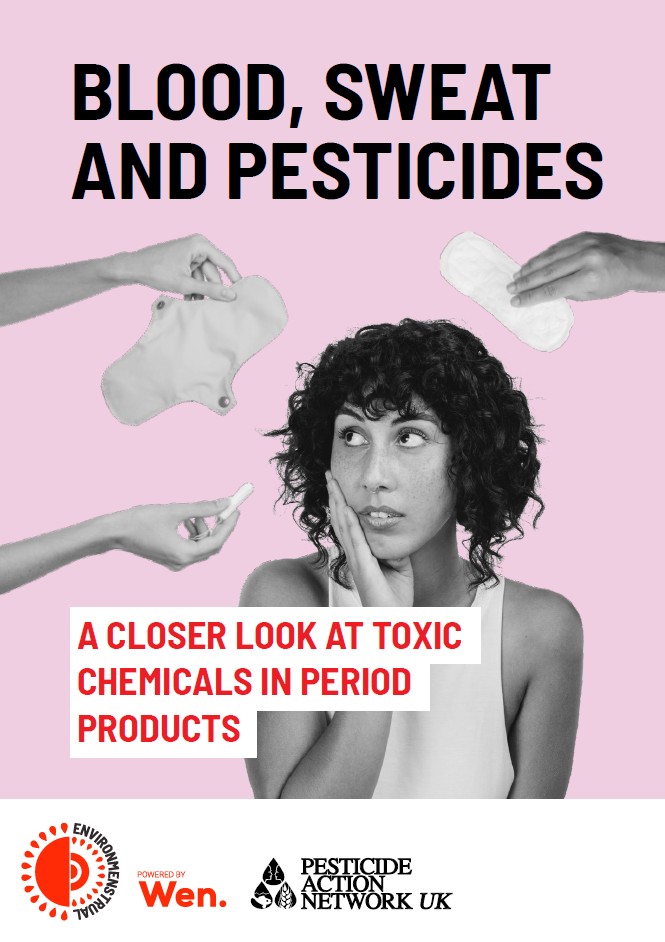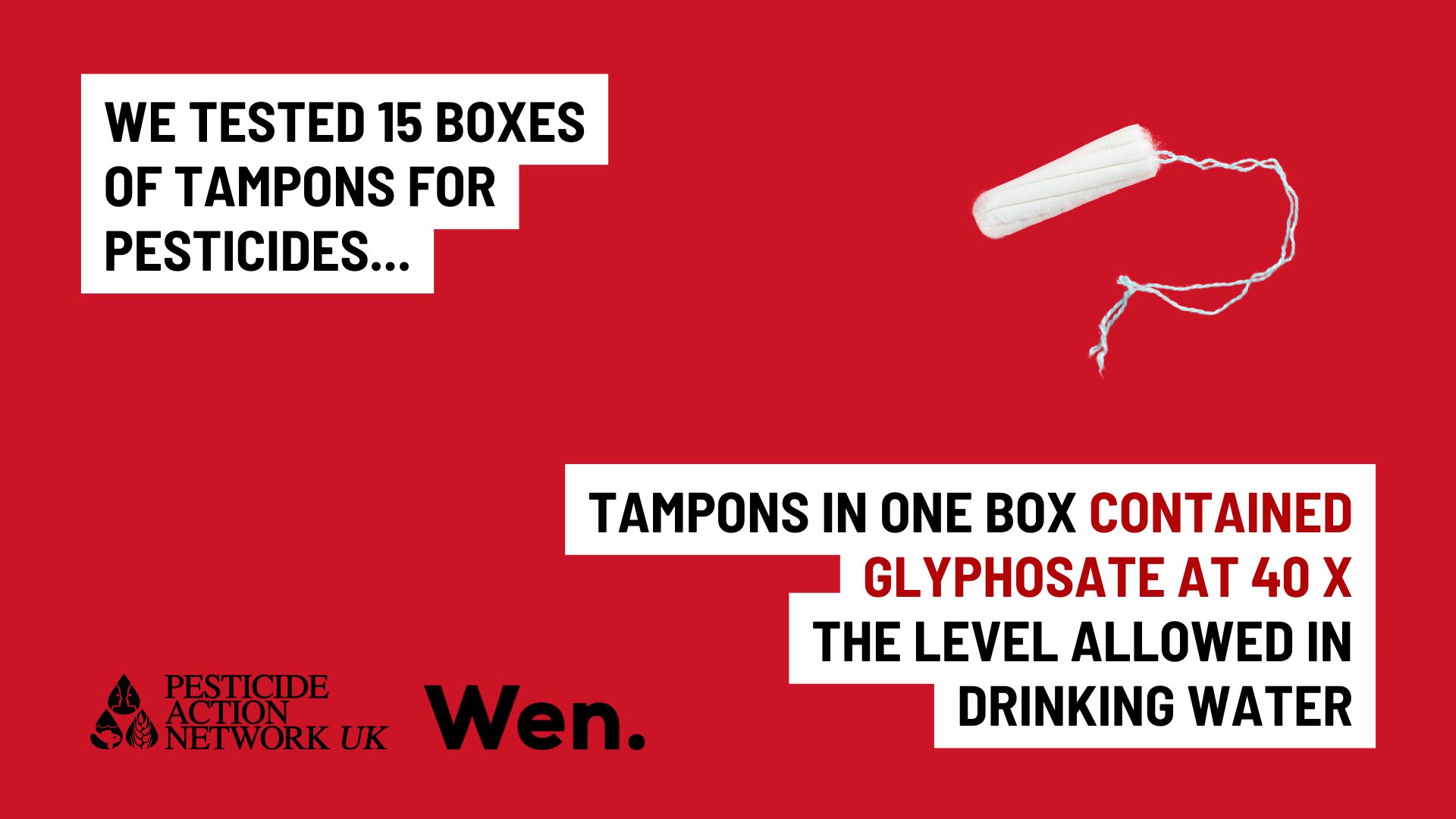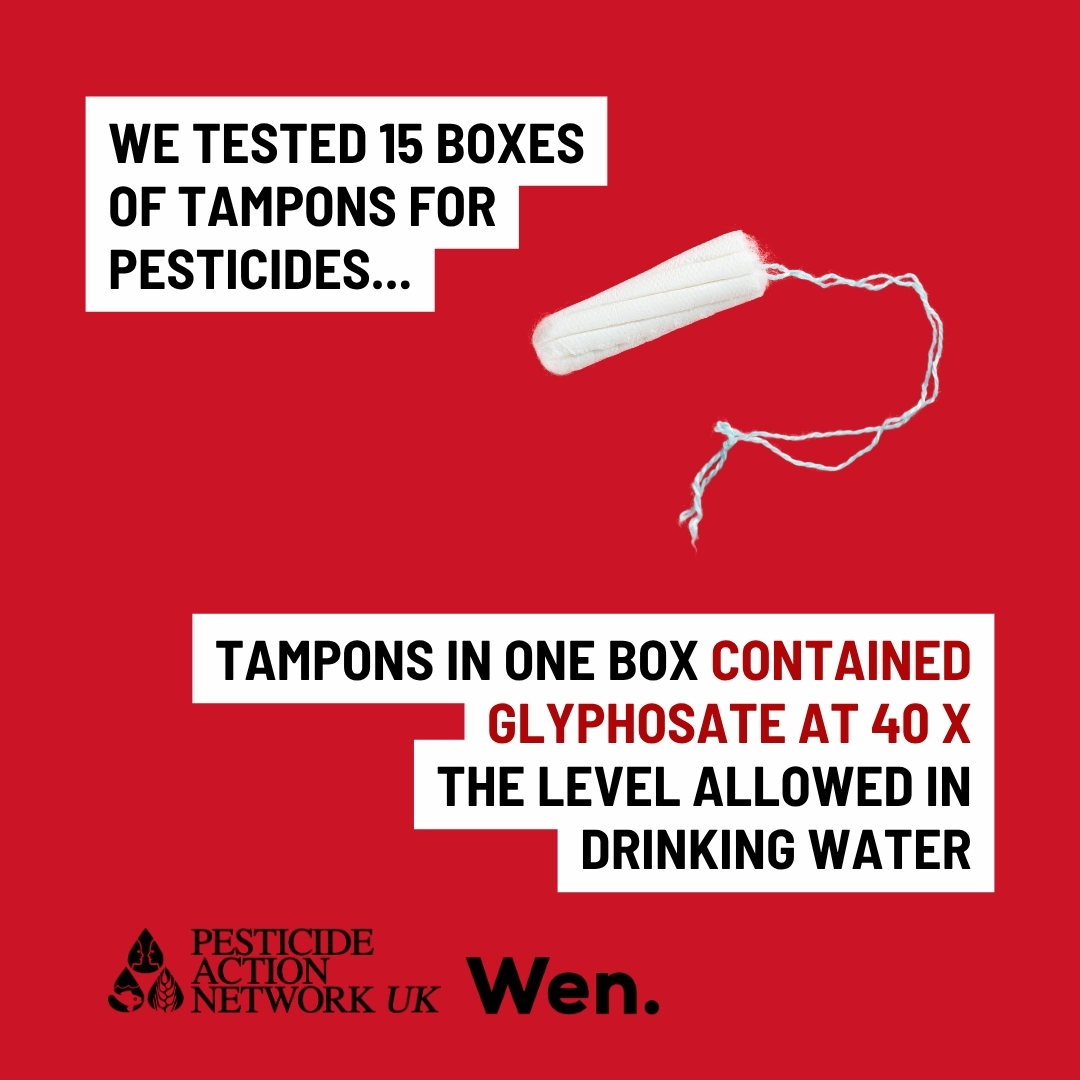Pesticides in period products
Period products can contain pesticides and other harmful substances, such as heavy metals and PFAS ‘forever chemicals’. Half of the world’s population have periods, with women, girls and people who menstruate each using an average of 11,000 disposable menstrual products during their lifetime. Despite the prolific use of these products, the potential health impacts of the chemicals that they can contain remains largely unexamined.
The UK lacks a robust regulatory framework to ensure that period products are safe to use. How does this impact on both consumers and cotton farmers around the globe, given that cotton is a main ingredient in both single use disposable menstrual products (SUDs), as well as in reusables?
Our report ‘Blood, Sweat & Pesticides’, published in collaboration with Wen (Women’s Environmental Network) takes a closer look at toxic chemicals in period products.
Testing UK tampons
In 2024, we conducted our own testing of boxes of tampons from UK shops and supermarkets. We tested just 15 boxes of tampons from UK shops and supermarkets for traces of pesticides. Despite testing on a very small scale, we found glyphosate in tampons contained in one of the boxes at levels 40 times higher than is permitted in drinking water. Glyphosate is the world’s most commonly used herbicide. In 2015, the World Health Organization (WHO) declared it to be a ‘probable carcinogen’, meaning that is has links to cancer. There is also increasing evidence connecting glyphosate to other serious health conditions such as Parkinson’s.
Given the global concern around the impact of glyphosate on human health, finding it in tampons is particularly alarming. Unlike when ingested through food or water, chemicals absorbed via the vagina directly enter the bloodstream, bypassing the body’s detoxification systems and therefore posing a significant health risk.
Other chemicals in period products
While relatively little research has been conducted, previous studies have shown that period products can also contain a variety of other chemicals. These include phthalates, dioxins, volatile organic compounds (VOCs), perfluoroalkyl and polyfluoroalkyl substances (known as ‘PFAS’ or ‘forever chemicals’), and heavy metals such as lead and arsenic. These chemicals have been linked to increased risks of reproductive and hormonal diseases such as endometriosis, infertility and cancer.
What needs to change?
The UK Government must introduce robust regulation for period products with a testing scheme in place to ensure that they are free of chemical residues. The Government should require manufacturers to disclose all the ingredients and additives found in period products so that customers can make informed decisions.
Given that young people are particularly vulnerable to health impacts from chemicals, the report also calls for the UK Government’s free menstrual products programme in schools to immediately switch from handing out mainstream tampons and pads to their organic equivalents and sustainable reusables such as period pants and moon cups.
Issues around menstruation cannot be addressed in isolation: that is why we are joining Wen in their call for a Menstrual Health, Dignity and Sustainability Act to tackle the environmental, social and health related challenges around access to and the safety of menstrual products.


The cotton supply chain
Many period products such as tampons and pads, begin their life as a cotton plant. Most of the world’s cotton is grown on conventional farms (with only around 1% of global cotton being grown organically) and it is often called the world’s “dirtiest crop”.
Approximately 300 pesticides are used in cotton production globally, with roughly a third of these classified as Highly Hazardous Pesticides (HHPs), including glyphosate. HHPs can have damaging impacts on human health. While some are acutely toxic, threatening the health of those who use them, others have been linked to the development of chronic diseases such as cancer. Many of the HHPs used in cotton production pose a major risk to the environment, harming pollinators and other wildlife or contaminating water and soil in regions where cotton is grown.
Cotton farmers are being exposed to toxic pesticides at concerning levels. Farmers in the global south, in particular, are often working in environments with little to no protective equipment. Many cotton farmers are women, who face the health risks of working with pesticides both on the farm and in the home on a daily basis.
Taking action to eliminate pesticides and other harmful chemicals from period products would be a major win. Not only for those of us that rely on such products, but also for the communities and natural environment where the cotton is produced.
Image: Alougba, a smallholder organic cotton farmer in Benin / Credit Gbèmèho Elisé Fanou



